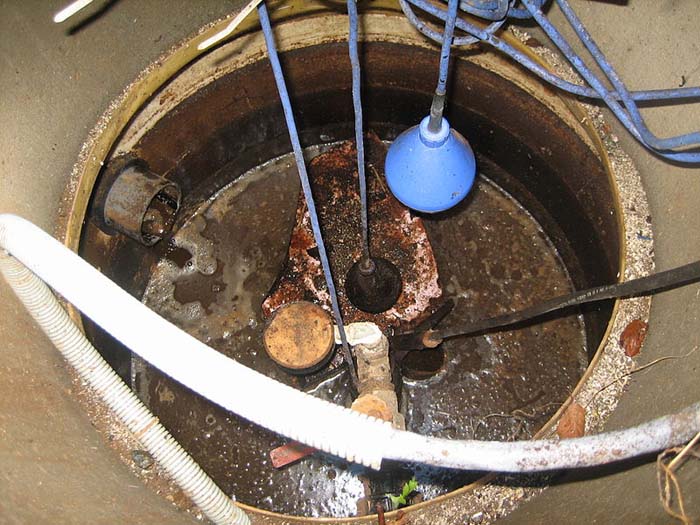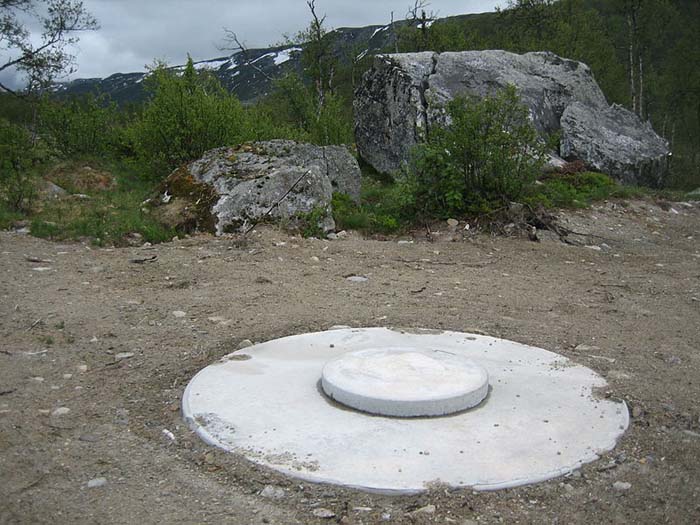
The term “decentralized wastewater treatment” describes an alternative to transferring wastewater to a central facility for treatment. The process involves managing and treating the wastewater close to its source. This method can treat wastewater from homes, businesses, and factories.
Key Features and Benefits of Decentralized Wastewater Treatment
Decreased Overloading of Central Systems
A decentralized wastewater system can reduce strain on already-established centralized plants in densely populated areas by treating wastewater locally. This can be especially helpful at times of high demand or in areas seeing significant population growth when centralized systems are already at or near capacity.
Protect the Environment
By lowering the likelihood of spills or leaks during transportation and treating wastewater locally, a decentralized wastewater system helps reduce the risk of environmental contamination. They help in water conservation by encouraging recycling and reusing water.
Cost-Effectiveness
Decentralized systems are more cost-effective than extensive sewage networks or huge treatment plants. They reduce the cost of installation and maintenance and minimize the need for significant infrastructure, such as pipes.
Resilience and Sustainability
Decentralized treatment makes wastewater management more resilient by distributing the treatment capacity over numerous sites. Because of this decentralization, problems at any point have less effect. In addition, many decentralized systems use eco-friendly technology for wastewater treatment, such as constructed biofilters or wetlands.
Flexibility and Scalability
Any community, from a single family to a small municipality, can meet its unique requirements by creating a decentralized wastewater system. Their versatility makes them suitable for single-family homes, small towns, and rural settings.
How Decentralized Wastewater Treatment Works
In places where centralized systems are impractical, such as individual homes, small communities, or rural areas, a decentralized wastewater system (DEWATS) is built to treat wastewater near its source. Here’s how decentralized wastewater treatment works:
Key Components and Processes
- Collection System:
- Drains and Pipes
A system of pipes and drains collects wastewater from houses or other structures and transports it to the treatment facility.
- Pre-Treatment:
- Grit Chambers and Screens
First things first: get rid of any grit or large solids that could ruin the rest of the treatment. Grit chambers settle heavy particles, while screens catch smaller debris.
- Primary Treatment:
- Septic Tanks
The sediments fall to the bottom, creating sludge, while the oils and grease float to the top, creating scum. This is a typical primary treatment procedure. Excess liquid effluent is directed to another treatment facility.

- Secondary Treatment:
- Aerobic Treatment Units
These facilitate microbial decomposition of organic materials by use of oxygen. Here are some methods:
- Constructed Wetlands
A wetland is a man-made or naturally occurring area where microbes, plants, silt, and biologically degrade wastewater.
- Suspended Growth Systems
Wastewater, frequently stored in aerated tanks, contains suspended microorganisms.
- Fixed Film Systems
Microorganisms flourish on a surface that wastewater flows over, decomposing pollutants.
- Tertiary Treatment:
- Sand Filters
These further get rid of any remaining pathogens and fine particles.
- Disinfection
The remaining infections can be eliminated using methods such as ozone, ultraviolet light, or chlorination.
- Disposal or Reuse of Effluent:
- Reuse Systems
Reusing treated water for purposes other than drinking, such as flushing toilets and irrigation is possible.
- Surface Discharge
Release treated water into an open body of water (effluent of a certain quality is required).
- Soil Absorption Systems
A second filtration layer is achieved when treated water is spread out into the soil and allowed to seep into the earth.
The 4 types of decentralization
A decentralization system treats wastewater closer to its point of generation using smaller, more localized systems as an alternative to larger, more centralized treatment plants. A decentralized wastewater treatment system can prove invaluable, particularly in places with specific environmental issues, such as developing or rural areas. The four most common kinds of decentralized wastewater treatment systems are:
- Aerobic Treatment Units:
Anaerobic treatment units aerate wastewater to breakdown organic matter by encouraging the growth of aerobic bacteria. These units are commonly utilized in locations where septic systems are not an option. This is because of high groundwater levels and the condition of the soil.
- Advantages:
Produces effluent that meets stringent environmental requirements, has a lower footprint than septic systems, and effectively treats wastewater with high organic loads.
- Drawbacks:
Compared to septic systems, it is more complex, expensive, and require frequent maintenance, leading to higher operational costs.
- Membrane Bioreactors:
Ultrafiltration (UF) and Microfiltration (MF), two membrane processes, are combined in MBRs to treat wastewater biologically. The system efficiently eliminates organic and inorganic pollutants, resulting in reusable effluent of superior quality.
- Advantages:
It is designed for different scales, produces high-quality effluent, and is compact, making it ideal for places with limited space.
- Drawbacks
This decentralized wastewater treatment system requires more energy, professional operation and maintenance, and higher starting costs.
- Constructed Wetlands:
The main components of these systems are soils, wetlands vegetation, and the microbial communities that live in them. They treat wastewater through natural means. A constructed wetland area filters out contaminants in wastewater using physical, chemical, and biological means.
- Advantages:
It has the potential to be inexpensive to run, provide a home for wildlife, and be aesthetically appealing.
- Drawbacks:
Needs a lot of space; poorly planned areas could attract mosquitoes.
- Septic Systems:
These are the backbone of decentralized wastewater treatment systems, particularly in more remote places. A drain field and septic tank make them up. When a building’s wastewater enters a septic tank, the particles settle to the bottom, and the liquids go to the drain field, where they undergo additional treatment.
- Advantages
This design is perfect for single-family houses or small communities since it is simple, inexpensive, and effective.
- Drawbacks
Constant pumping and maintenance are necessary; improper management could lead to groundwater pollution.
Each of these systems has specific challenges, advantages, and applications. System selection is influenced by regulatory requirements, population density, local ecosystem, and wastewater characteristics.
The purpose of a Decentralised wastewater system
In locations where centralized systems are either not possible or too expensive, decentralized wastewater treatment systems offer an environmentally friendly and efficient alternative for wastewater management. A decentralized wastewater system’s main purposes and advantages are as follows:
- Supporting Development in Remote Areas
By delivering basic sanitation services without the costly infrastructure construction required by centralized systems, decentralized systems pave the way for the development of rural or remote areas.
- Cost-Effectiveness
In less densely populated or remote areas, it may be more economical to construct and maintain a decentralized wastewater treatment system rather than extend an existing central sewer system. This makes large treatment plants and a complex network of pipes unnecessary.
- Resilience and Reliability
As in a decentralized system, distributing treatment over numerous locations makes wastewater management infrastructure more resilient. Total system failure owing to isolated problems, including technical glitches or natural catastrophes, is less likely with this diversification.
- Protect the Environment
A decentralized wastewater treatment system can help safeguard local water bodies from contamination due to leaks and overflows in large sewage networks by treating wastewater at its source. Advanced treatment techniques that successfully remove pollutants can also preserve water quality.
- Energy Efficiency
Decentralized wastewater treatment facilities often use less energy than big, centralized systems. It is possible to power smaller systems with renewable energy sources and create them to run with little power.
- Local Control and Management
Decentralized systems give communities more control over how their wastewater is treated. More responsive and specialized management methods can improve community participation and system performance, and local oversight can facilitate this.
- Public Health Improvement
A decentralized wastewater treatment system can improve public health by reducing contaminants and pathogen exposure by treating wastewater effectively locally.
- Enhanced Flexibility and Scalability
A decentralized system can benefit any community, from single-family homes to small municipalities, because it is adaptable. It is quite versatile since its size may be adjusted to suit different populations and water needs.
- Resource Recovery
These methods allow us to extract useful substances from wastewater, such as fertilizers and irrigation water and put them to new uses. This helps promote eco-friendly methods and decreases the strain on our precious water resources.
Pros and cons of Decentralized Wastewater Treatment
It is important for policymakers and communities to weigh the approach’s benefits and drawbacks.
Advantages
- Environmental Advantages:
- Decreased Contamination
This reduces the potential for massive leaks or spills, common in centralized systems and can cause serious environmental damage.
- Localized Reuse
Freshwater will be less needed because treated water can be used for groundwater recharge, landscaping, or irrigation.
- Engagement and Control by the Community:
- Public Awareness
Greater understanding of the need for water conservation and consumption among locals.
- Local Management
Better, more environmentally friendly wastewater treatment methods may emerge as communities exercise greater agency in this area.
- Decreased Infrastructure Costs:
- Avoidance of Huge Infrastructure Projects
There is no need for large centralized treatment facilities or extensive sewer networks.
- Lower Costs of Transportation
Construction and maintenance costs are lowered due to shorter pipes and decreased pumping requirements.
- Redundancy and Resilience:
- Operational Continuity
With localized concerns, the entire community is spared, guaranteeing that operations will continue to some extent.
- Catastrophe Resilience
System failures or natural catastrophes are less likely to damage a decentralized wastewater treatment system.
- Scalability and Flexibility:
- Scalability
Without the large initial expenditures for centralized systems, it may be easily expanded to accommodate a growing population.
- Modular Design
Urban and rural areas can benefit from these systems because they adapt to local conditions.

Cons of Decentralized Wastewater Treatment
- Problems with Compliance and Regulatory:
- Monitoring and Enforcement
Demands thorough oversight to guarantee conformity, which may be demanding on available resources.
- Compliance with Standards
Compliance with national and regional regulations for decentralized wastewater treatment systems is not always easy.
- Possible Risks to the Environmental:
- Localized Impact
Although the overall danger of contamination is reduced, localized failures, if not addressed swiftly, can cause considerable harm to the environment and human health.
- Nutrient Management
The accumulation of nutrients from treated wastewater in regions with insufficient soil absorption has the potential to cause eutrophication and other ecological issues.
- Economic Disadvantages:
- Economies of Scale
Economies of scale can make centralized systems more cost-effective, especially in heavily populated areas.
- Initial Costs
Initial startup expenses can be considerable, particularly for small areas without existing systems, despite cheaper infrastructure costs.
- Variable Performance:
- Technology Reliance
Certain systems depend on complex technology that might not be applicable or maintainable elsewhere.
- Effectiveness Variability
The system’s design, environmental factors, and maintenance procedures can all majorly impact performance.
- Managing and Maintaining Challenges:
- Consistency and Quality Control
Maintaining a consistent level of treatment quality across different locations can be difficult.
- Technical Expertise
In order to keep it running, maintenance and operation experts on the ground are needed.
Conclusion
As an alternative to conventional centralized systems, decentralized wastewater treatment offers several advantages, including greater flexibility, lower costs, and less environmental impact. These systems improve environmental protection and public health by treating wastewater near its source, making them useful for a variety of settings, from rural to metropolitan communities.
